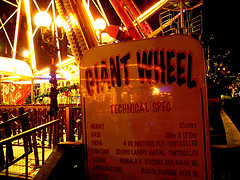This is the post for the July 10, 2014 class meeting.
Thanks for your work in the forums yesterday. I’m quite happy with the responses you’ve posted. You’re doing exactly the kind of work I was hoping for!
Class Work for July 10
These are the goals for today’s work:
- Read about the characteristics of technical writing (chapter 1 of Markel).
- Read about the importance of audience and purpose (chapter 4 of Markel).
- Analyze some example bio statements, based on the readings.
Characteristics of Technical Writing
Chapter 1 of Practical Strategies for Technical Communication outlines 6 characteristics of technical writing:
- It addresses particular readers.
- It helps readers solve problems.
- It reflects the organization’s goals and culture.
- It is produced collaboratively.
- It uses design to increase readability.
- It consists of words or images or both.
We’ll return to these six characteristics a lot during the term. We’ll use them to analyze examples of tech writing, including the texts that you write yourself. Read chapter 1 for all the details on how they work. Of these six characteristics, the one that causes the most questions is that tech writing is produced collaboratively. Think of it as a very wide idea of collaboration, and read that part of the chapter closely.
Importance of Audience and Purpose
We will talk about audience and purpose for every project that you work on in this class. The concepts of audience and purpose are vitally important in every kind of writing (in fact, any kind of communication) that you do because they determine the information you include and the tone and style that you use.
For audience, chapter 4 identifies four key questions to answer for any writing project:
- Who are your readers?
- Why is your audience reading your document?
- What are your readers’ attitudes and expectations?
- How will your readers use your document?
Pay attention to the details on those questions in your reading, as well as the idea of primary, secondary, and tertiary audiences. As you read about purpose in the chapter 4, be sure you understand the details on these four questions:
- Why is the reader reading your document?
- How will the reader read your document?
- What is the reader’s reading skill level?
- What is the physical environment in which the reader will read your document?
These questions will help you make decisions about the information in writing projects as well. For instance, the reading skill of your reader will help you decide if you technical jargon is appropriate.
At the end of the chapter, be sure to notice the “Writer’s Checklist” (pp. 76-77). You will find a checklist at the end of nearly every chapter in the book. These lists are a nice summary of the important concepts in the chapter. For some of the projects we will work on, we will use the checklists for peer review and feedback on what you write.
Analyze some example bio statements
Once you have read the information in the readings for today, I’d like you to apply them by analyzing some example biography statements.
-
Read several of the biographies on the sites below. I gathered a range of biographies from different kinds of sites. Please be sure to read at least one from the first three sites (which are more formal company/academic bios) and one from the last three sites (which are more informal).
- Corps of Cadets Staff Biographies
- Draper Aden About Us page
- Virginia Tech Athletic Fund Staff
- East Coasters Staff
- WSLS Staff
- Campus Automotive Staff
-
Go to the Analyzing Example Bio Statements post in the forums and talk explain what you can tell about audience and purpose for the bio statements based on the information they include and the tone of the biography. There are some questions there to help you get started.
-
(Optional) Once you have posted about your readings, read through what others had to say, and reply to one or more of the ideas or questions that your classmates have posted.
-
If you don’t yet have a copy of the textbook, do the best you can. The concepts from these first readings are fairly straightforward, so go ahead and reply to some of the posts in the forum. You can catch up on your reading this weekend, and come back and add something if you want to.
